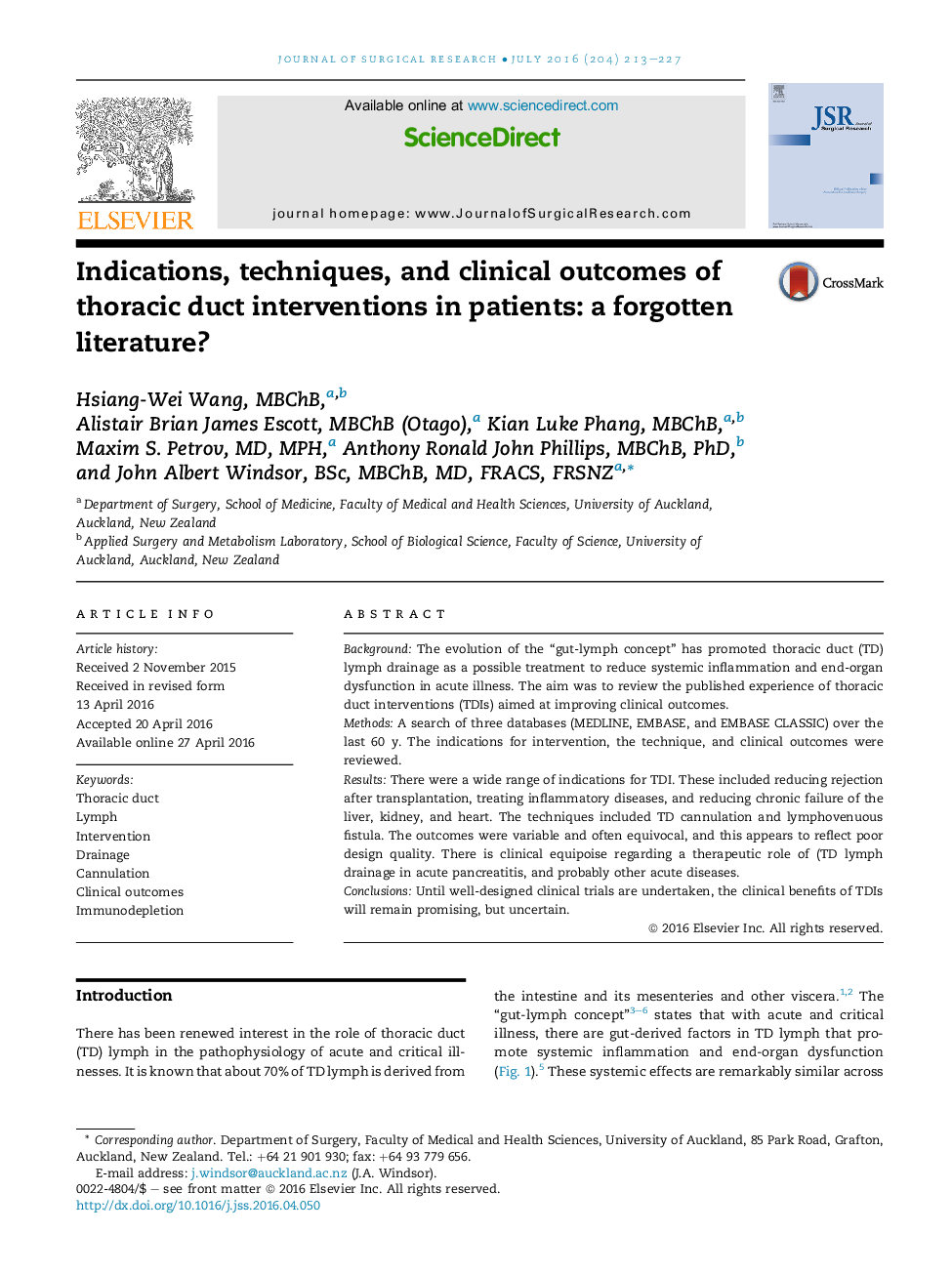| Article ID | Journal | Published Year | Pages | File Type |
|---|---|---|---|---|
| 4299174 | Journal of Surgical Research | 2016 | 15 Pages |
BackgroundThe evolution of the “gut-lymph concept” has promoted thoracic duct (TD) lymph drainage as a possible treatment to reduce systemic inflammation and end-organ dysfunction in acute illness. The aim was to review the published experience of thoracic duct interventions (TDIs) aimed at improving clinical outcomes.MethodsA search of three databases (MEDLINE, EMBASE, and EMBASE CLASSIC) over the last 60 y. The indications for intervention, the technique, and clinical outcomes were reviewed.ResultsThere were a wide range of indications for TDI. These included reducing rejection after transplantation, treating inflammatory diseases, and reducing chronic failure of the liver, kidney, and heart. The techniques included TD cannulation and lymphovenuous fistula. The outcomes were variable and often equivocal, and this appears to reflect poor design quality. There is clinical equipoise regarding a therapeutic role of (TD lymph drainage in acute pancreatitis, and probably other acute diseases.ConclusionsUntil well-designed clinical trials are undertaken, the clinical benefits of TDIs will remain promising, but uncertain.
